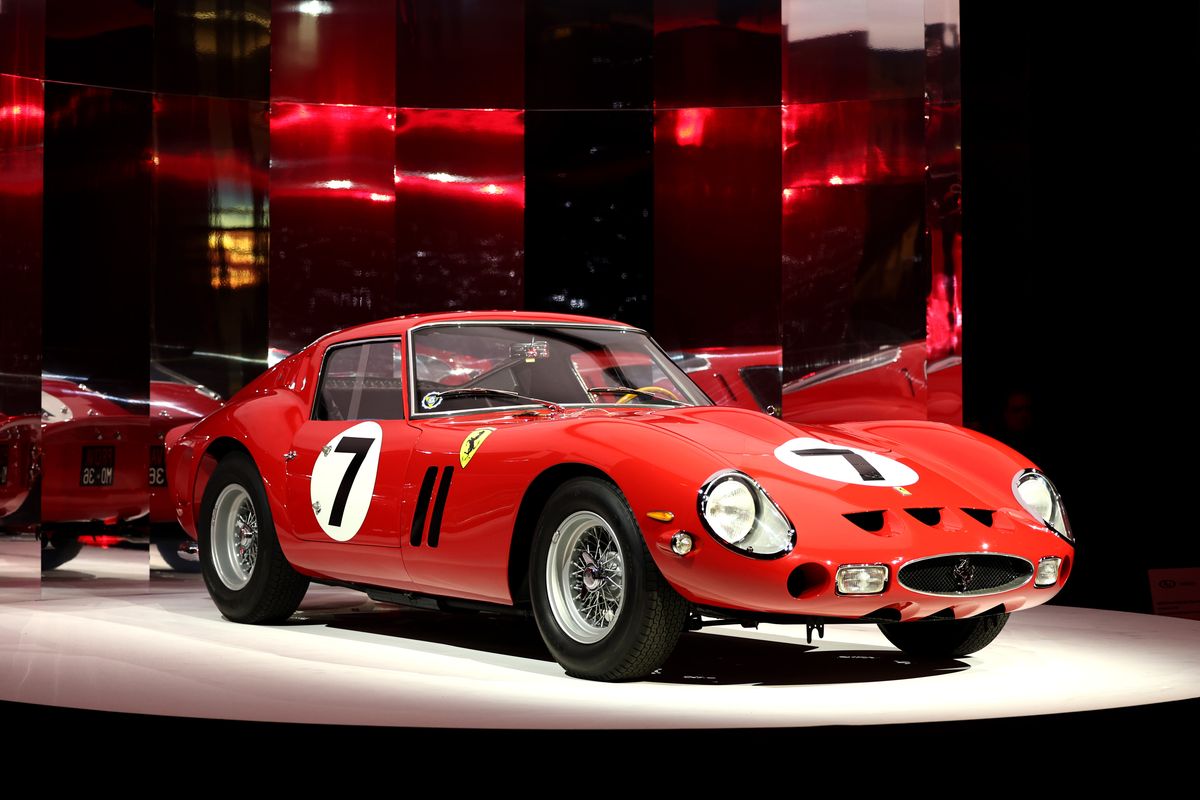The holy grail cars? Get them while they last

The news shocked the collector-car world. In May 2022, a 1955 Mercedes-Benz 300 SLR Uhlenhaut Coupé – named for its creator, the company’s chief engineer Rudolf Uhlenhaut – sold for 135 million euros, (about $143 million). That was more than double the previous record of $70 million set by a 1963 Ferrari 250 GTO in 2018.
Perhaps even more surprising is that a car built in the mid-1990s, a McLaren F1, sold in 2021 for more than $20 million. Sales in the tens of millions of dollars are rare in the collector-car market, but then these three cars represent what high-end collectors call “holy grail” cars, so named because they are the most sought after in the vintage-car world.
Before the McLaren F1 sold, the most fertile era for the priciest postwar collector cars was the 10 years from the early 1950s and the early 1960s, which included that Mercedes and Ferrari, and rivals like the Jaguar XKSS (actor Steve McQueen owned one), with an example selling in 2023 for $13.2 million.
The McLaren F1, which was produced in the 1990s, is a modern car and clearly an outlier, and in the quarter century since it went out of production, no other road-legal car of equal appeal to collectors has emerged. Given the seemingly finite life of the internal combustion engine, the McLaren may be the last of the holy grail cars.
Cars capable of selling for eight and nine figures have several things in common, some are obvious even to noncar people, and some are slightly more nuanced. Rarity is a major factor. The Mercedes was one of just two built; Ferrari produced two series of 250 GTOs that totaled 36 cars; only 16 of the Jaguar XKSS were built before a fire at the factory ended production; and in the case of the McLaren, 106 were built.
All four cars are generally regarded as design triumphs.
“With one exception, the F1, all are actual or slightly modified competition cars, a category that by its very genesis means very limited production, very high performance, seductive no-compromise styling intended to beguile the wind, the very image of derring-do,” said Miles Collier, author of the book “The Archaeological Automobile,” in June. “And, of course, these cars are astronomically valuable in today’s market, itself a reflection of the significance collectors attach to these machines.”
Brian Rabold, vice president of automotive intelligence for Hagerty, the classic-car insurer and automotive entertainment brand, said the appeal of these holy grail cars was global.
“They’re insulated from trends, they’re the very definition of connoisseur’s cars,” he said.
Nathan Merz, a vintage car dealer near Seattle, said the acquisition of just one of these cars probably represented the ultimate purchase for most collectors.
“Once you add something like a Ferrari 250 GTO to a collection, where do you go from there?” he said. “Holy grail cars represent once-in-a-lifetime opportunities, the culmination of a long pursuit of what’s bigger and better.”
Collier said the Mercedes, Ferrari and Jaguar, all built to be raced, could still be operated in normal road traffic. “And, they are not so fast that they can’t be driven vigorously by a normal, skilled driver,” he said.
The owners of these apex cars can and do use them, and this usability contributes to their desirability. There are events specifically tailored to these types of cars, like the Goodwood Festival of Speed in England, which begins on Thursday, and the Le Mans Classic in France, which ended on Saturday, where the cars can be driven at close to their potential, Rabold said.
Neither Collier nor Rabold said they believed that modern ultrahigh-performance cars had much in common with the Mercedes, Ferrari, Jaguar and McLaren.
“Cars like the Bugatti Chiron may have double the horsepower (almost 1,600) of the McLaren F1 and multiples more than a vintage Ferrari, Mercedes or Jaguar, but it doesn’t necessarily make them better than their analog predecessors, nor is a car like the Bugatti directly related to any competitive race car,” Rabold said.
Collier said that “modern hyper cars have capabilities often beyond an owner’s skill set and have equally untouchable repair problems that consign them to the rubbish heap alongside all those smartphones, laptops and digital devices.”
“In this modern world, our four candidates are handmade,” he said. Their designs were drafted on paper, which has been preserved, and they can be repaired “as long as artisans are available.”
Being easily repaired was part of the ethos of the McLaren F1.
“While the car was two full generations newer than the Mercedes, Jaguar and Ferrari, and beginning to enter the modern era, the McLaren was intentionally designed with restoration in mind,” Collier said.
While it was not specifically designed as a racecar, a modified version of the F1 won the 24 Hours of Le Mans in 1995. And it was not just a class win, but the car took the overall race.
Collier said that victory cemented the F1’s reputation as a holy grail car. “It is the only road car in living memory to have won the 24 Hours of Le Mans.”
Aston Martin is trying to match that feat, announcing that it will enter Le Mans in 2025 with a competition version of its road-legal Valkyrie hyper car. Regardless of that car’s success in France, with its sophisticated, electronics-laden hybrid drivetrain, it’s far removed from the analog honesty of the McLaren F1.
“The Valkyrie has several traits working in its favor, namely: rarity, strong brand recognition of the Aston Martin name, world-class performance and a highly touted design team,” Rabold said. “But it’s far too early to write its legacy.”